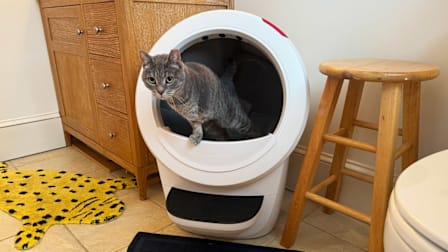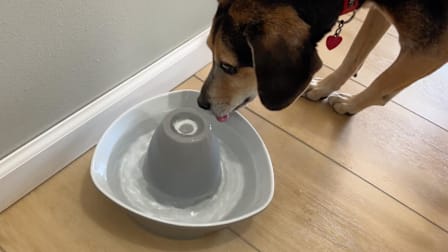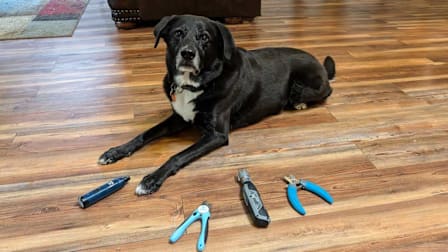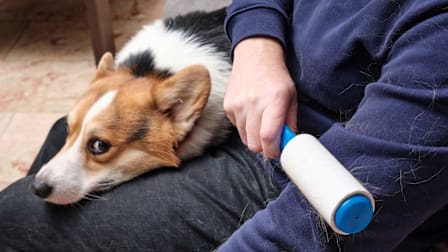Best Dog Toothbrushes (Because Yes, You Really Need to Brush Your Pet's Teeth Daily)
We evaluated seven dog toothbrushes and got tips from vets on how to make the task easier for you and your dog. Plus, what to do with older dogs whose teeth might have been neglected.
When you shop through retailer links on our site, we may earn affiliate commissions. 100% of the fees we collect are used to support our nonprofit mission. Learn more.
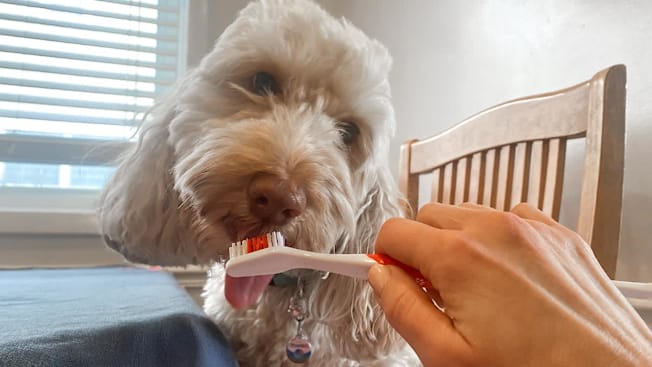
We can’t blame our dogs for running like the wind whenever we approach them with a toothbrush. Their wolf ancestors were never asked to open up and say “aah” so they could have their teeth polished with a toothpaste that tastes like London broil.
Your Guide to the Best Pet Products
Meet Our Dog Volunteers
First, meet our cute testers, who range in size and have different (but equally dazzling) personalities.
Blake, Bug, and Chase
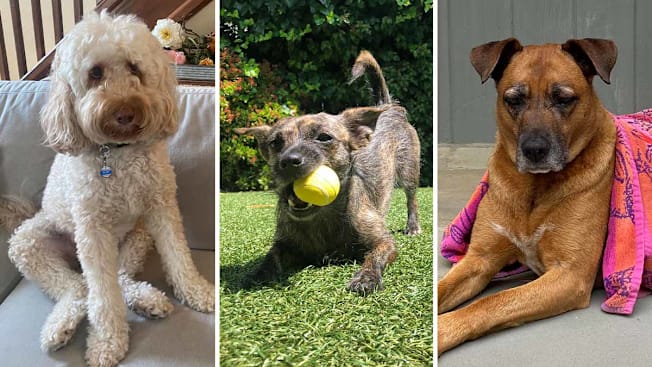
Photos: Consumer Reports Photos: Consumer Reports
Small Dog: Bug
Bug is a 5-year-old mixed breed who weighs 12 pounds. When she was a wee puppy, she tolerated teeth brushing well, and her vet even admired her pearly whites. She has since fallen off the wagon, so getting back on will be an interesting challenge. Bug’s human is CR’s Kerri O’Connell.
Medium-Sized Dog: Blake
Blake is a 5-year-old Labradoodle who weighs 36 pounds. Don’t try to tell him what’s best for him—toothbrushes, baths, not eating toilet paper—he won’t hear it. His pastimes include staring at you blankly when you call, barking at manhole covers, and avoiding toothbrushes. I’m Blake’s human.
Large Dog: Chase
Chase is a 10-year-old Boxer mix who weighs 75 pounds. Once able to scale 6-foot fences, he’s much more grounded now that his love of treats has caused his weight gain. Food—rather than dental health—has always been his priority, but he’s never turned down a brushing if it’s with chicken-flavored toothpaste. Chase’s human is CR’s Dirk Klingner.

















